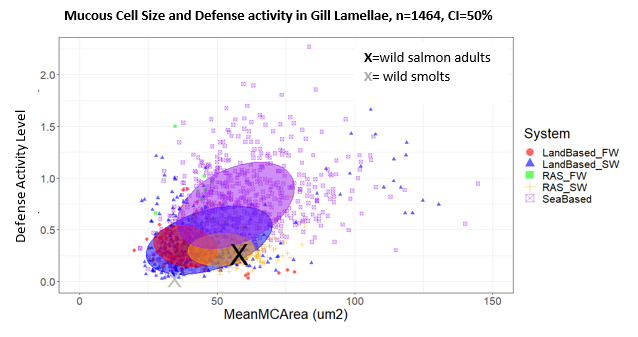FISH WEAR THEIR IMMUNE SYSTEMS ON THE OUTSIDE: WHAT THIS SLIME MEANS AND HOW TO PRACTICALLY MEASURE IT
The mucosal immune system of fish is active on the external surfaces of skin and gills and on the internal surface of the gut, employing naturally produced antiviral, antifungal, antiparasitic and antibacterial substances to maintain homeostasis. The histological architecture of these three tissues is essentially the same, with changes in the mucous cell sizes and number and changes in the epithelial cells typical of a broad range of gill diseases, skin responses to external challenges and dietary composition.
It has been possible since 2010 to quantify these mucosal responses, which show clinically important results . The trademarked Veribarr™ method has been applied in 9 farmed species, in 7 countries and 3 tissues in over 60 labscale and commercial scale trials and monitoring. Quantidoc AS now has a unique and large database about healthy farmed and wild salmon in 7 different systems gathered over 10 years . This comprises RAS FW, RAS SW, landbased FW and SW, open sea cag es, closed seabased systems and natural fjords , and salmon sizes from less than 100 g to over 6 kg
giving tens of thous ands of objective, quantitative, statistically robust data points and metadata.
The natural barriers of gills, skin and gastrointestinal tract of the salmon are the most relevant and sensitive health probes possible.
Differences from healthy barriers can be detected early and with statistical robustness.
Veribarr ™ Grid allows early diagnosis of changes to give new systems time to bring fish back to a healthy status. The figure below shows the lamellar mucosa of the gills which represent 50% of the surface area of the fish and are constantly reacting to waterborne substances. The talk will include standardized sampling and tissue handling protocols.
